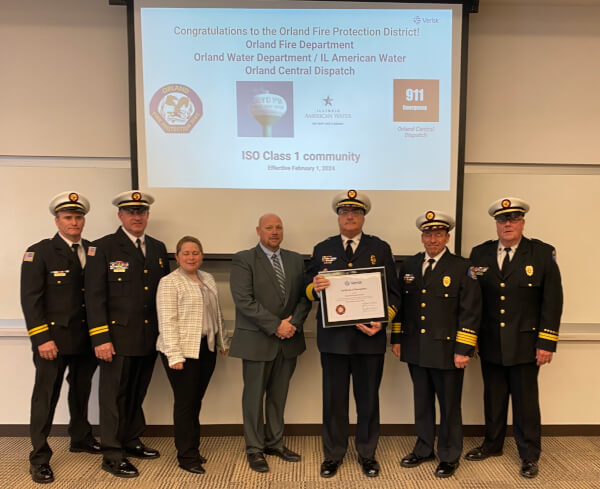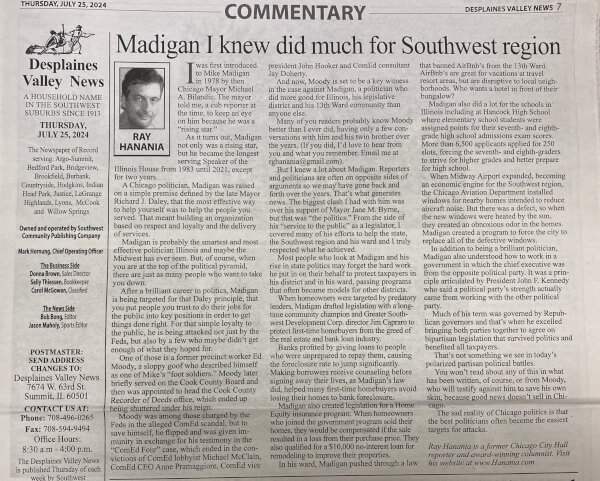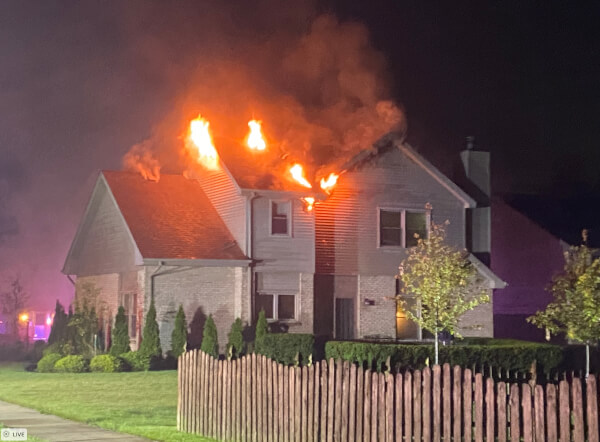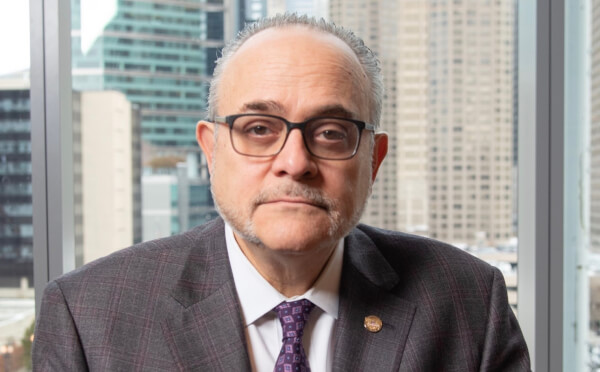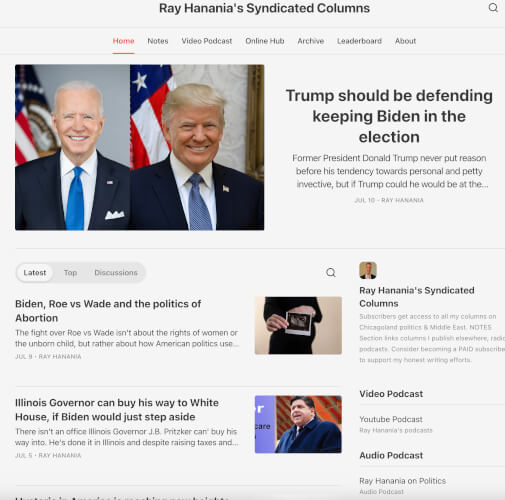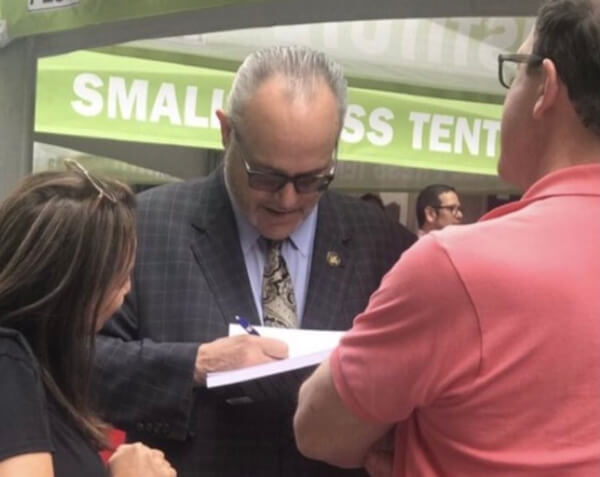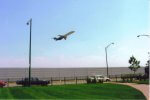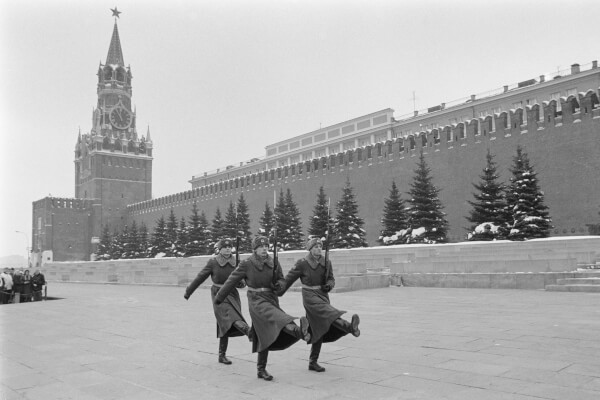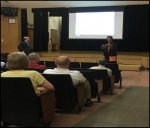Biden administration exposes how Iran is aiding Russia in Ukraine war
DASD (Middle East) Dana Stroul holds a press briefing on the Department of Defense’s participation in the U.S.-Gulf Cooperation Council Working Group meetings.
By Ray Hanania
Iran is directly providing weapons to support Russia in its war against the people of Ukraine, a top State Department officials said this week, and much of that military equipment is being tested to see how to improve its use against America, Arab Gulf and other targets.
Deputy Assistant Secretary of Defense Dana Stroul told reporters during an online briefing on Feb. 13, 2023 that Iran is sending drones and other military equipment to Russian to support the killing of. civilians in Russia’s brutal invasion and assault on Ukraine and that the Iranians are assessing how to improve the use of those weapons basedon how they are being used to perform in killing civilians in Ukraine.
Stroul said that Iran’s support of Russia enhances the threats of terrorism from the Iranian regime which continues to seek to build its nuclear weapons and continuers to attack American targets around the world including in Iraq and Syria and in the Arab Gulf region.
“When it comes to the specific Defense Working Groups that we held today, I would note a few key themes. The first is that there is a shared assessment between the United States and the GCC of the threats that face us, so there’s an alignment of the threat perception. We spent extensive amounts of time today focused on the full set of threats from Iran, whether it’s Iranian proliferation of UAVs to nonstate actors across the region that have threatened citizens across the Middle East, very specifically, in Saudi Arabia, the UAE, and of course, the ongoing threat to U.S. forces who are in Iraq and Syria to prosecute the counter-ISIS mission,” Stroul said.
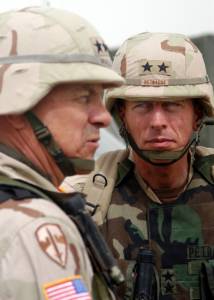
“Iranian aggression at sea remains a serious concern. I, of course, will hold all of those remarks for our NAVCENT commander. Needless to say, the work to bring partners together and the increased rate of maritime interdiction, I — speak — speaks both to the serious nature of the threats we face at sea, and to how we can effectively address those threats through increased cooperation.”
Stroul added, “We also spent time focusing on increased Iranian-Russian military cooperation, the illicit transfer of Iranian weapons to Russia for use in Ukraine that are actively killing Ukrainian civilians, and how that increased military cooperation has serious implications for the stability and security of the Middle East.”
Iran is the primary supplier of terror weapons to the Houthis who are engaged in a war in Yemn that also targets Saudi Arabia, Stroul noted, but the supplying of terror weapons to Russia in its war against Ukraine is not undermining the supplying of terror weapons to the Hothi militias and terror groups, Stroul emphasized.
“We have seen no change in Iranian willingness or activities to transfer weapons to the Houthis, despite their work with increasing military cooperation with Russia for the war in Ukraine, number one,” Stroul said.
“And number two, there has been a decrease in Houthi attacks against Saudi Arabia because of the truce that has been in place. Now, the actual truce has expired, and at this point in time, all sides are not resuming hostilities, though the truce has not been formally extended.
“A major concern that we all have to watch very closely is that the Houthis actually use the time of the truce to reset and rearm their forces, and meanwhile, there’s been extensive and active diplomacy, particularly by the United Nations and our own State Department Senior Envoy Tim Lenderking, who — hopefully you’ve seen the press releases — is constantly in the region, consulting with stakeholders to move from truce to truce extension to ceasefire to political process.”
Here si the transcript of Stroul’s remarks to the international media:
DEPUTY ASSISTANT SECRETARY OF DEFENSE DANA STROUL: Good morning to all of you out there, and thanks for tuning in. This is Deputy Assistant Secretary of Defense for the Middle East Dana Stroul. Before I jump in, let me just make sure the other people who are here with me in Riyadh have the opportunity to introduce themselves.
VICE ADMIRAL BRAD COOPER: I’m Vice Admiral Brad Cooper, the commander of Fifth Fleet and U.S. Navy Forces Central Command.
MAJOR GENERAL CLARK QUINN: Yeah, Major General Clark Quinn. I’m the deputy commander of Ninth Air Force, Air Forces Central.
MAJOR GENERAL SEAN SALENE: Well, good afternoon and good morning. I am Major General Sean Salene. I am the director of strategy, plans and policy at U.S. Central Command.
REAR ADMIRAL ADAN CRUZ: Good morning. I’m Rear Admiral Adan Cruz. I’m on the Joint Staff, J5, Middle East.
ASSISTANT DSCA DIRECTOR ROB HELFANT: Good afternoon. My name is Rob Helfant. I’m the assistant director for international operations at the Defense Security Cooperation Agency.
DASD STROUL: Okay, so you have a lot of people doing really big, important things on the line here. This is Dana again. Let me go ahead and situate for you all the GCC-US working groups that we just completed about 30 minutes ago, and put in context why we’re all here today in this incredibly impressive delegation.
So last March, in 2022, the Biden administration convened the US-GCC Defense Working Groups, which began under President Obama following the Camp David Summit. We convened last March two sets of working groups, one focused on integrated air and missile defense and a second one focused on maritime security.
We all came together again to the region this time in February at the explicit request of the GCC to hold these two working groups again. What’s unique about this week, however, is that it’s not just the two US-GCC Defense Working Groups at our meeting. There are other working groups led by other parts of the U.S. government also here.
So in two days’ time, Rob Malley will chair an Iran working group of the US-GCC, and the following day our senior bureau official for counterterrorism at the State Department, Chris Landberg, will chair a US-GCC working group focused on counterterrorism.
So broadly speaking, what this reflects is tremendous interagency focus and investment specifically on the Middle East, and investments in consultations, collaboration and discussion of concrete actions with our members and partners of the Gulf Cooperation Council, the GCC.
When it comes very specifically to the US-GCC Defense Working Groups, I want to situate what we just did on a continuum of engagement. So for example, President Biden was here in — in the Kingdom of Saudi Arabia in Jeddah last summer, together with the GCC, Egypt, Jordan and Iraq, and in the Jeddah communique and the public statements that came out of that appearance he specifically made a commitment to U.S. ongoing investment in this part of the world, as well as a focus on integration as the path forward for how we will continue to partner with our allies and partners here in the Middle East.
What we’re doing here is also consistent with Secretary Austin’s vision for the Middle East, and very specifically, the National Defense Strategy and its vision for integrated deterrence and the imperative of integration and partnerships as a means for addressing shared security threats in the 21st century. So it’s very clear to the U.S., and what is very clear to our partners is that the threats of the day — of today, and the threats of tomorrow do not respect borders, and therefore, call for updating and upgrading how we partner together to counter those threats. Whether it’s the proliferation of unmanned aerial vehicles, UAVs, illicit trafficking of weapons and drones at sea, the arming, training and equipping of lethal aid to nonstate actors, then across the Middle East, cyber threats, et cetera — all of these call for multilateral cooperation and enhanced collective defense.
When it comes to the specific Defense Working Groups that we held today, I would note a few key themes. The first is that there is a shared assessment between the United States and the GCC of the threats that face us, so there’s an alignment of the threat perception. We spent extensive amounts of time today focused on the full set of threats from Iran, whether it’s Iranian proliferation of UAVs to nonstate actors across the region that have threatened citizens across the Middle East, very specifically, in Saudi Arabia, the UAE, and of course, the ongoing threat to U.S. forces who are in Iraq and Syria to prosecute the counter-ISIS mission.
Iranian aggression at sea remains a serious concern. I, of course, will hold all of those remarks for our NAVCENT commander. Needless to say, the work to bring partners together and the increased rate of maritime interdiction, I — speak — speaks both to the serious nature of the threats we face at sea, and to how we can effectively address those threats through increased cooperation.
We also spent time focusing on increased Iranian-Russian military cooperation, the illicit transfer of Iranian weapons to Russia for use in Ukraine that are actively killing Ukrainian civilians, and how that increased military cooperation has serious implications for the stability and security of the Middle East.
When it comes to the specific working groups, integrated air and missile defense and maritime, I think what the big takeaway here is that there has been no other moment in time in which the prospect for meaningful integration is more real than today. It’s both because of that alignment of threats that I just went through, and it is also because of emerging technology and the culture of innovation that CENTCOM is fostering together with its partners.
So when it comes to integrated air and missile defense, we spent time talking about where we are now and where we can go in the future in terms of increasing our intelligence sharing, early warning, and also looking through the different systems and capabilities that each partner has, and how we can create a more effective layered air defense to successfully counter those threats that we see in the region.
And when it comes to maritime security, NAVCENT is doing incredible work today, expanding maritime domain awareness and bringing together partners through its combined task forces to address threats that we hear from our partners are of tremendous concern. So this is not just about U.S. security, but responsiveness to the requirements and the needs and the concerns that we hear from our partners, and through that, are demonstrating that we are standing with them and working both bilaterally and multilaterally to address these threats.
Let me stop there — turn it over to Admiral Cooper first to give you some more about the really impressive and meaningful work that’s taking place under his leadership at NAVCENT, and then over to General Quinn from AFCENT, who equally is doing incredible work there to expand and integrate air defenses across the region.
Thank you.
VICE ADMIRAL COOPER: Okay, thanks, Dana.
And good morning, everybody. Brad Cooper here. It’s great to be here in Riyadh. I popped over with a one-hour flight from our headquarters in Bahrain, where Fifth Fleet is headquartered, as many of you know.
I’d also like to mention we are headquartered with two major multinational naval coalitions, as Dana mentioned, that the United States is leading. The first is a 38-member nation organization called the Combined Maritime Force. It’s the largest maritime partnership in the world.
And the second one is an 11-member nation coalition called the International Maritime Security Construct, whose operational arm is called Task Force Sentinel. Our U.S. and international personnel in the region are doing just absolutely tremendous work each and every day. And U.S. naval forces and our international partners, including forces from all the GCC countries, are deterring, detecting and responding to regional maritime threats with record-breaking results.
In fact, in just the last two months alone, five major interdictions at sea have resulted in U.S. and partner maritime forces seizing more than 5,000 weapons, 1.6 million rounds of ammunition, 7,000 proximity fuses for rockets, over 2,000 kilograms of propellant that are used for rocket-propelled grenades, or RPGs, and $60 million worth of illegal drugs.
And these numbers are part of an overall two-year trend. In 2021 — or, rather, since 2021 we’ve seized over a billion — with a B — dollars in illicit drugs and nearly 15,000 illegal arms. The weapons were unlawfully headed to Yemen, as I think is well-documented.
Everything we’ve accomplished both in recent months and over the last two years is the direct result of great work our maritime forces are doing, really, in two key areas, strengthening partnerships and accelerating innovation.
And so our agenda here in Riyadh underscored the progress as well as the future opportunities to expand U.S. and GCC cooperation.
As an example, 16 months ago we established the Navy’s first unmanned and artificial intelligence task force, called Task Force 59. And since then we’ve conducted 15 unmanned exercises with our international partners, integrating drones at sea with cameras, sensors and radar, that really have enabled us to put more eyes out on the water to better monitor what’s happening and thus increase our deterrence.
In addition, the exercises we’ve had significant international representation to Task Force 59 on the staff itself. Currently seven of the task force personnel are international officers from six different nations. And while here this week we extended invitations to all the GCC members to contribute a representative from their country directly onto this Task Force 59 staff, in a very unique arrangement.
I’d also note that the Task Force 59 deputy commander has just recently reported from the U.K. Royal Navy. So, big picture, I think it’s fair to say that we believe, you know, very firmly in partnerships as the critical enabler for being able to take these new technologies and leverage them in new and exciting ways, specifically integrating unmanned systems and artificial intelligence. And this is why we’re working with regional partners to establish a multinational unmanned surface vessel fleet.
We’ve articulated the desire about a year ago that, by the end of this year, we would grow in a partner manner to have 100 USVs patrolling around the Middle East, again, by the end of this year.
Our partners really do see the incredible opportunity to strengthen our collaboration at sea by building toward a common operating picture. And the integration of these autonomous platforms and sensors alongside our crewed ships will enhance this capability.
And I’ll give you an example. If you’re a country in the region today that can see 20 miles off the coast on any given day, given the existing sensors and ships that they have, you can just imagine what you can achieve by putting an unmanned platform with radars and additional optics out there. These platforms are controlled by satellite. So instead of seeing 20 miles, now you can see 40 miles. You can imagine, if you put yet another platform out there on the ocean, instead of being able to see 40 miles, you can see 60.
So in a very short period of time and a low expenditure of resources, you can essentially triple how far you can see on any given day. And when you multiply that by the partners in the region, both GCC countries as well as in the Red Sea, you essentially have about a 25 times increase in your awareness of what’s happening on the ocean on any given day, which is tremendous.
So that’s the real value proposition for the countries in the region, increasing the domain awareness, understanding what’s happening around them.
I’ll quote the Navy Secretary, Secretary Del Toro, who said, “We’re on the cusp of a technological breakthrough that will define future conflict,” unquote. I think that’s very accurate. Here in Fifth Fleet we see these breakthroughs with the unmanned systems and artificial intelligence, every day. And with the support of Admiral Gilday, as CNO, we’re really moving forward in a meaningful way.
Last couple comments, last month we announced that Task Force 59 has achieved full operational capability. So 15 months after it was initially established, that’s really lightning speed relative to how other organizations are able to move forward.
And a key aspect of that has been the participation of all the GCC countries. In the last year we’ve heard both the president and the secretary of defense reiterate the profound importance of our partnerships here in the Middle East, expressing our regional security commitment is strong and unwavering. And I see that every day in meaningful and tangible ways.
Here’s a good example. In 2021 we conducted 33 partner exercises in the region. In 2022 we more than doubled that and conducted 70 exercises, which is a gigantic number. But here we are about six weeks into the new year. We’ve conducted 14 already.
And then, finally, at the end of this month we will commence the largest maritime exercise in the region called IMX ’23, International Maritime Exercise. It involves all the countries in the region and countries beyond the region. And with nearly 60 countries and organizations participating, I think it is yet another foot-stomper on the importance of our commitment in the region, our commitment to partnership and moving forward in a meaningful way.
Thanks so much.
MAJOR GENERAL QUINN: All right. Good morning. This is General Quinn, Clark Quinn from Ninth Air Force AFCENT, once again. So thank you for the opportunity today to speak. And thanks also to — to the GCC for welcoming us into their working group here. It’s really their forum. We’re guests in their area. But we all have this shared interest of seeing a stable, secure and prosperous region. And I think that’s really a global desire, is to see any region — this one that we’re sitting in right now is one of those — as a stable and secure environment.
A lot of the discussions that happened today in the working group session are really rooted in what I’d say is an easily shared interest among all the nations, much like maritime security. The nations here within the Gulf — GCC, just like any other nation, to include our own, wants to protect its citizens and to protect its land. And so, when you have a good shared interest like that, that we all understand and agree with, it’s easier to come to common ground.
So for integrated air and missile defense, just looking at the words a little bit, it is integrated air and missile. So it could be ballistic missiles. It could be cruise missiles. It could be manned or unmanned aircraft, or UAS’.
When it was only a ballistic missile threat, you have a pretty good idea what direction that threat could be coming from. Those generally do not maneuver. If it is a UAS or a cruise missile, it becomes much more of a 360 degree threat, that those systems can fly from any location on any path to achieve impacts at a target and it’s no longer just one direction that you have to look at.
And that’s something that we really talked about quite a bit today. So if you have that general agreement that it — it’s — it’s in everyone’s best interests to defend their nation, if you have a general agreement that the threat could come from any direction, then you try and think about, to be able to defend, you have to be aware of where the threat is coming from, and that’s what a lot of our discussions were today, as well as trying to get to a shared air domain awareness, being able to see what is airborne and what is coming towards your nation and what could be a threat.
One of the things we’ve been working quite a bit over the last year, since the last meeting in March, is to get each of the respective partners to be willing to share their air picture with each other and ultimately with the United States.
There are some technical challenges to being able to share it, but ultimately, it’s really an authority and a desire to share, because even if we don’t have a technical ability to share an air tract digitally, we can at least pick up a phone and relay that there is a threat inbound.
What we also saw, much like Admiral Cooper just talked about with being able to see 20 or 40 or 60 miles further, is if the sensors that you are using to see these inbound threats are only within your own land mass, you’re going to be limited with how far you can see. There’s just curvature of the Earth, power of the radar, the ability to see out at distance.
About — when you look at the GCC as a whole, around the entire Arabian Peninsula, and you look at the number of early warning systems that each of those nations have, you can then essentially expand your visibility out by using those other early warning radars.
So that’s the direction we’re trying to go. We have been working bilaterally with many of these nations over the last several decades. Each of these nations within the GCC have been working with one another.
And as we look to get towards a multilateral — in other words, all of us working together, getting that initial agreement to share in the — in — for — the data that we have, once we have that understanding and the ability to share, then we work on the technical abilities to get it all into a common picture so that we can all see the air domain, and then once we see it, we’re better able to defend it.
STAFF: With that, we’ll transition to questions.
Over to USNI’s John Grady for our first question please.
Q: Thank you. My first question is has the Houthis’ use of cruise missiles and drones in Yemen declined over the past year or has coverage of these strikes fallen off against targets in Saudi Arabia and shipping in the Red Sea due to the war in Ukraine?
And as part of that, have the Iranians been shipping more arms, as — as Admiral Cooper mentioned, to Russia, thus cutting off support of the Houthis? Thank you. Directed to Admiral Cooper.
DASD STROUL: Oh, well, let me start. I’m going to take that question first because it goes —
(CROSSTALK)
DASD STROUL: — than just NAVCENT. So — so this is Dana Stroul. Let me start out by saying we have seen no change in Iranian willingness or activities to transfer weapons to the Houthis, despite their work with increasing military cooperation with Russia for the war in Ukraine, number one.
And number two, there has been a decrease in Houthi attacks against Saudi Arabia because of the truce that has been in place. Now, the actual truce has expired, and at this point in time, all sides are not resuming hostilities, though the truce has not been formally extended.
A major concern that we all have to watch very closely is that the Houthis actually use the time of the truce to reset and rearm their forces, and meanwhile, there’s been extensive and active diplomacy, particularly by the United Nations and our own State Department Senior Envoy Tim Lenderking, who — hopefully you’ve seen the press releases — is constantly in the region, consulting with stakeholders to move from truce to truce extension to ceasefire to political process.
Frankly, in that entire experience, we have not seen the Houthis be good faith actors in extending the truce, being willing to be flexible or take genuine movements toward a political process.
So let me just stop there and then —
VICE ADMIRAL COOPER: Yeah, just — I would just — I think Dana answered it holistically. I would just simply add, with respect to resetting and rearming of the Houthis, we’ve seen that continued flow down to them, which has resulted in us interdicting a large volume of it lately.
Q: Thank you.
STAFF: All right. And over to Michael Gordon, Wall Street Journal please.
Q: Yes, thank you. A question for Dana Stroul and General Quinn. As — as you know, for the longest time, the U.S. has had a vision for an integrated air defense among the GCC and has seen the potential for that, and that’s — for years, that’s been frustrated by internal dynamics within the GCC. Now you say there’s more interest.
Can you please say what specific steps will be taken over the next 12 months, let’s say, to make this a reality? Is there such a plan or is — or is the development of such a plan the next phase? I mean, could you please be as concrete as possible about how you intend to make this vision a reality?
And — and also, there’s another country that’s not part of the GCC that has strong capabilities in this area and it’s part of the CENTCOM AOR, Israel. Is there a concept to bring Israel into this integrated air defense or is that really a bridge too far at this point in time?
DASD STROUL: Hey, Michael, thank you. I’ll start first. So we agree with you, this — this vision and objective of a regional security architecture has existed for at least the past four administrations. So it’s been a long time goal.
What we think makes it more real now is not only a shared perception of the acute nature of the threats at — but number two, this focus within CENTCOM and its component commands on innovation and the opportunities of emerging technology.
So I know you directed it to General Quinn but let me start with a NAVCENT example. What Task Force 59 is doing by looking at commercial off-the-shelf options and integrating unmanned surface vessels — so we only have so many sailors and so many ships. But by integrating what is available commercially, we can expand maritime domain awareness, work with partners, identify threats much further out than we were able to before, and then through — through NAVCENT and – that know – that it creates, decide, okay, these are the different ships or leaders who are on deck today who can respond to that threat and — and — and see — see what’s going on. So that’s an example of how this works.
There’s no question that the opportunities to integrate air and missile defense are more promising and can be enhanced in a meaningful way because of Israel’s entrance into CENTCOM, and you’ve heard many of our leaders talk about this, most recently Dr. Colin Kahl at the Manama Dialogue, so I’d refer you to his remarks where he talks about Israel, given the threats it’s faced and the capabilities of the Israeli Defense Forces and their readiness and willingness to share lessons learned, intelligence, early warning, because the threats they face are the same threats that the rest of the region faces. So we think that other regions integrating and beginning to sit at the same table with Israel is in the interest of stability and security in the region. We also understand that different governments are going to move at their own pace on that.
So the opportunities are very real. Setting Israel aside, the opportunities are still very real. We spent a lot of time talking about that today. And as you heard General Quinn mention, much of this is technical, but much of it is political. So we can only move as fast at integrating our air defenses and expanding how we work in the maritime domain if our partners are willing to take those steps, and that means being willing to share their national air pictures with everyone and with the United States. It means being willing to take steps to share intelligence faster and in a more integrated way, and it means making resource decisions and acquisition decisions in a way that we are keeping pace with each other so that we can continue that integration.
Let me stop there.
Do you want —
MAJOR GENERAL SALENE: Thank you very much, (inaudible). This is Sean Salene. I believe that we have spoken previously, and it’s good to hear your voice again. And so I’ll just followed DASD Stroul and say to your specific question of (inaudible), yes, and it’s already begun. And of all the bits and the technical complexities of the issue, sometimes happens that it’s just framing the decisions that have to be made, then respecting our partners and listening to them and their concerns, and then being able to move at their own pace, much as DASD Stroul had said. This is a (inaudible).
And so sometimes it is bringing the particular end state to which we need to go, in this case, for a single shared pane of glass that — which we would share the air domain awareness, and then being able to move out on concrete steps at a pace which has already begun.
Maj Gen Quinn: All right, and this is General Quinn. DASD Stroul and General Salene, I think, covered the — the big picture. To — to your point about concrete steps, I will say yes, there are concrete steps being done, although I will acknowledge that there is no — there’s not a programmed line that gets us to a — a flip of a switch that we now have integrated air and missile defense. It’s — it’s small steps.
And examples of them are just last month at the end of January, there was a regional air chiefs meeting, that General Grynkewich, the Air — AFCENT commander, hosted. Good participation there. It — it’s certainly not all of the regional air chiefs, but the ones that are participating are eager to — to continue doing more.
And what is probably not seen too much is that there are small steps being done continuously over the past several years. Some of them are bilateral and with individual nations, and some of them are only at the tabletop level, where we will sit down and talk about what we would do with a shared threat that’s coming inbound. Those probably don’t make it in the press, nor should they. They’re not earth — that earth-shattering, but expanding those into multilateral, and we do have regional air chiefs and air defense chiefs that are willing to do that. And in fact, we do it nearly monthly at some small level. And what — or, the most recent request is, as opposed to doing more, is actually doing a little bit less often, but increasing the complexity of the exercises that we are doing to better reflect the advanced threat that we’re facing.
Q: Okay, thank you.
(CROSSTALK)
STAFF: All right, thank you. Let’s go to Fadi Mansour from Al Jazeera please.
Q: Thank you, Phil. My — my question has been asked, thank you, and answered.
STAFF: Excellent. And Jared Szuba, Al-Monitor.
Q: Hi, all. Thank you for your time. Thanks for doing this. Just wanted to check in on the Red Sands program. Is — are all GCC countries scheduled to attend that first iteration?
And secondly, Vice Admiral Cooper, good to hear from you. Thanks again for doing this. Just wanted to check in on the updates, if there any updates, with partners contributing to Task Force 59. I know you mentioned previously that Bahrain and Kuwait have committed to contribute. Just wondering if you have any updates on that for us. Thanks.
VICE ADMIRAL COOPER: Okay. This is Admiral Cooper. Let me — let me take that last one first. So as you mentioned, Bahrain and Kuwait have publicly committed to acquiring systems. Every other country in the region is in some degree along the path of acquisition, both internally assessing would — where they like to go, and then asking all the right questions. But everyone is interested. Everyone sees the intrinsic value and, you know, big picture. Everyone’s interested. Over.
MAJOR GENERAL SALENE: Thank you — thank you, sir, for — Jared. Thank you very much for the question. Again, this is Sean Salene from U.S. Central Command. So for your question specifically on Red Sands, it is a bilateral exercise, and it is ongoing now. But I think what’s really important about this Red Sands Exercise — it’s innovation. It’s part of the culture of innovation that General Kurilla has established at U.S. Central Command and down through its components in order to face the pacing threats that we have inside of our area of responsibility. It is probably no surprise to anybody else who’s on the other side of line that the threats are growing in — in complexity. The difficulties that we have in (facing counter-UAS ?) are the — necessitates us to experiment, to move quickly with our partners to take the lessons learned that we have to other AORs, as was mentioned, Russia-Ukraine conflict, and then apply them and exercise them here to increase the collective defensive capabilities of our allies and partners.
Q: Thanks. So just to clarify, you mentioned Red Sands is bilateral, so that’s just between the U.S. and Saudi Arabia, or are other partners invited to, you know, observe? And that’s ongoing right now, just to confirm. You said that.
MAJOR GENERAL SALENE: And so it’s — it’s ongoing now, sir. It’s a bilateral right now.
STAFF: All right. Over to Oren from CNN, please.
All right, we’ll swing back. Kristina Wong, Breitbart.
STAFF: Thank you so much for doing this, everyone. Does the U.S. have weapons stocks or intercepted illicit arms in any of the GCC countries that it has sent or is considering sending to Ukraine? Thank you.
DASD STROUL: That’s a great question, Kristina. This is Dana.
I wouldn’t want to get out ahead of any decisions. The most important focus we have right now is on working with our partners to continue the really impressive pace of interdicting weapons, working through the combined task forces, and then making sure that we can hold Iran accountable for its continued shipment of illicit weapons, both by the press releases, shining a public light, and then making sure that others, such as the UN panel of experts, has access to those weapons.
Q: Was support to Ukraine discussed during the working meetings? And thank you so much and good to hear from you, DASD Stroul.
DASD Stroul: I don’t want to get into the details of the private meetings between us and the GCC but broadly what I do want to say is that we talk with all partners, in the Middle East and frankly across the globe, about our increasing concerns about Iranian-Russian military cooperation and the fact that that is directly responsible for the deaths of Ukrainian civilians and the devastation of Ukrainian infrastructure and the implications of the battlefield practice that both are getting for what we could see here in the Middle East.
Q: Thank you.
STAFF: And over to Jon Harper, DefenseScoop please.
Q: Thank you. I had a — a — two questions. One, with regard to the integrated air and missile defense, what are some of the main technical challenges involved in doing that? You noted some of the, you know, political obstacles, but just from a purely technical perspective, how difficult is it going to be to integrate all of those various systems?
And then on the maritime front, are you hoping to get firm commitments from this U.S.-GCC meeting this week from various countries to contribute to that envisioned force of having 100 USVs by the end of the year?
MAJOR GENERAL QUINN: This is General Quinn. For the — the — I — I’ll be at the macro level for the technical challenges frankly, because that’s my level of understanding of it, but ultimately, we’re running typically on a classified network and each of those individual nations are running their own air defense and air surveillance on their — either their own version of a classified network, and it’s just getting those networks to talk to one another through a cross-domain solution and getting the risk approval so that we ensure that there are no cyber threats that make their way onto ours or vice versa. They want to make sure that their internal systems remain clean as well.
So it’s really just a technical challenge of connecting computer systems across domains and ensuring cybersecurity.
VICE ADMIRAL COOPER: Yeah, this is Brad Cooper. On the unmanned and A.I. integration piece — so since just the beginning of the year, we’ve already done four unmanned exercises here in the region. So in a — they’ve involved all of the partners. So the partners are already committed to working with us in this regard.
As to the specifics of their timeline and what they will acquire, that’s a national level decision and we’re certainly supporting them in that, but honor their — honoring their — the timeline that they’re on. Over.
Q: Thank you. And — and just — you know, you mentioned UAV threats earlier, and I was wondering, you know, for the attack at the — at Tanf Garrison in Syria last month, were those Iranian drones that were used in that attack? Can you provide any additional details about what types of systems those were and how they were — I think a couple of them, at least, were defeated, is my understanding.
DASD STROUL: So I’d refer you to the statement put out by U.S. Central Command about that attack. I would make two points. The first is U.S. forces are in Iraq and Syria to prosecute the defeat ISIS mission, working with partners on the ground. We’re there for no other purpose.
Our forces are under constant threat from Iranian-aligned militia groups who seek to constantly harass our forces, which detracts and undermines our ability to continue prosecuting the defeat ISIS mission, and it also directly undermines, threatens, and jeopardizes the recovery efforts of those local communities who, only a few years ago, were under ISIS caliphate rule, experiencing the worst depravities and atrocities. So it’s truly destabilizing.
The second point I would make is that we hold Iran accountable and responsible for these attacks because Iran is arming, training, equipping, and guiding these groups.
Q: Thank you.
STAFF: And for our last question, over to Sam Dagher from MEI please.
Q: Yeah. Hi, thank you. Thank you for the opportunity. I mean, just a quick question about the — the timing of this meeting. I mean, my understanding is the — this meeting was supposed to take place four months ago and got delayed because of all of the tension between the U.S. and Saudi Arabia over oil production cuts. Is that correct?
DASD STROUL: These were the groups that were scheduled for October, but Sam, the point I would really make is that we’re here now and the GCC asked us to come this week, and that it’s not just the defense working groups, it’s a whole series of working groups.
And the point is that all of the members of the GCC are sending incredibly impressive delegations to sit with our delegation for an entire day and work through a lot of incredibly difficult technical issues about how we ensure our collective defense in the region.
Q: Thank you.
STAFF: All right. And ma’am, back to you for any closing remarks please.
DASD STROUL: Thanks so much, everybody, for tuning in. I just want to underscore a few points.
The subtext, of course — nobody asked it — is that there continues to be concern in the region that the United States is deprioritizing the Middle East or distracted from the Middle East. I think the work that we did today and the incredibly impressive lay down of operational, technical, and strategic steps that we’re all taking together with our partners really offers a counter-narrative here.
I would also remind everybody that we have tens of thousands of U.S. forces across multiple bases in the Middle East, working every day bilaterally and multilaterally to both strengthen the defenses of our partners and increase interoperability.
And I would point to a good example of why interoperability really matters right now, which is the Juniper Oak exercise that U.S. Central Command and the Israeli Defense Forces just completed in January. Interoperability is important because what we need to do is learn where our forces are working together well and where we need to improve.
And what was accomplished in that Juniper Oak exercise will be captured in lessons learned that will then be applied and fused and integrated into the other exercises that CENTCOM already has planned with partners across the region. You heard General Quinn talk about AFCENT’s responsiveness to partners wanting more complex, more inclusive exercises down the line.
So this is all about not just what we have in the region, although it is an incredibly significant investment. It’s also about what the United States can dynamically flow into the region to fall in alongside partners based on this work we’re doing to expand interoperability and respond to crises. That’s why we’re asking partners to take these steps with us to integrate our operating pictures. It is why we are expanding how we work together in the maritime domain.
All of this is extending that network of integrated deterrents, which should both send a signal to our adversaries, as well as a signal of reassurance and commitment to our partners in the region. And we think this is really what the comparative and competitive advantage of the United States is. There is no other partner who can build coalitions, expand partnerships, works every day in increasing interoperability with our partners and in integrating the defensive structures of our partners together with us.
It is unmatched globally and certainly regionally. And I think that commitment and that comparative and competitive advantage was on display today. Thank you.


